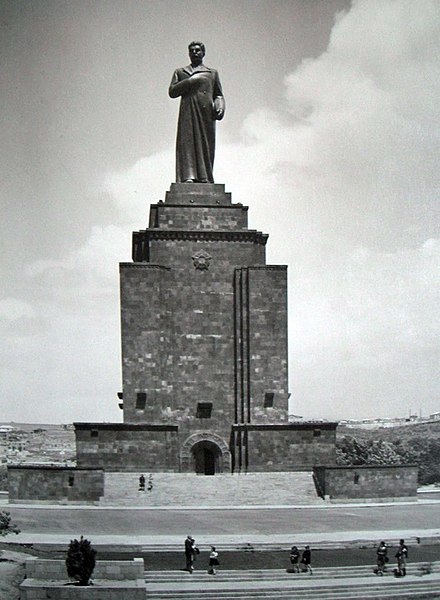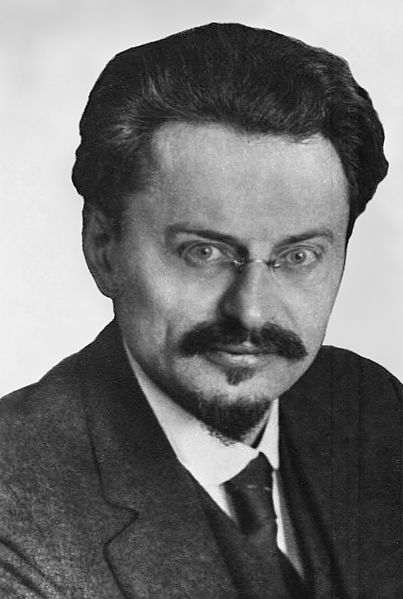De-Stalinization comprised a series of political reforms in the Soviet Union after the death of long-time leader Joseph Stalin in 1953, and the thaw brought about by ascension of Nikita Khrushchev to power, and his 1956 secret speech "On the Cult of Personality and Its Consequences", which denounced Stalin's cult of personality and the Stalinist political system.
O kulcie jednostki i jego następstwach, Warsaw, March 1956, first edition of the Secret Speech, published for the inner use in the PUWP
The Statue of Stalin in Yerevan was removed in 1962 and replaced by Mother Armenia in 1967
The Union of Soviet Socialist Republics (USSR), commonly known as the Soviet Union, was a transcontinental country that spanned much of Eurasia from 1922 to 1991. It was the largest country in the world by area, extending across eleven time zones and sharing land borders with twelve countries. A successor state to the Russian Empire, the country was nominally organized as a federal union of fifteen national republics, the largest and most populous of which was the Russian SFSR; in practice both its government and economy were highly centralized until its final years. It was the world's third-most populous country and Europe's most populous country. As a one-party state governed by the Communist Party of the Soviet Union, it was a flagship communist state. Its capital as well its largest city was Moscow. Other highly urbanized centers were Leningrad, Kiev, Tashkent and Baku.
Vladimir Lenin, founder of the Soviet Union and the leader of the Bolsheviks
Leon Trotsky, founder of the Red Army and a key figure in the October Revolution
Lenin, Trotsky and Kamenev celebrating the second anniversary of the October Revolution
Dissolution of the elected Russian Constituent Assembly by the Bolsheviks on 6 January 1918






